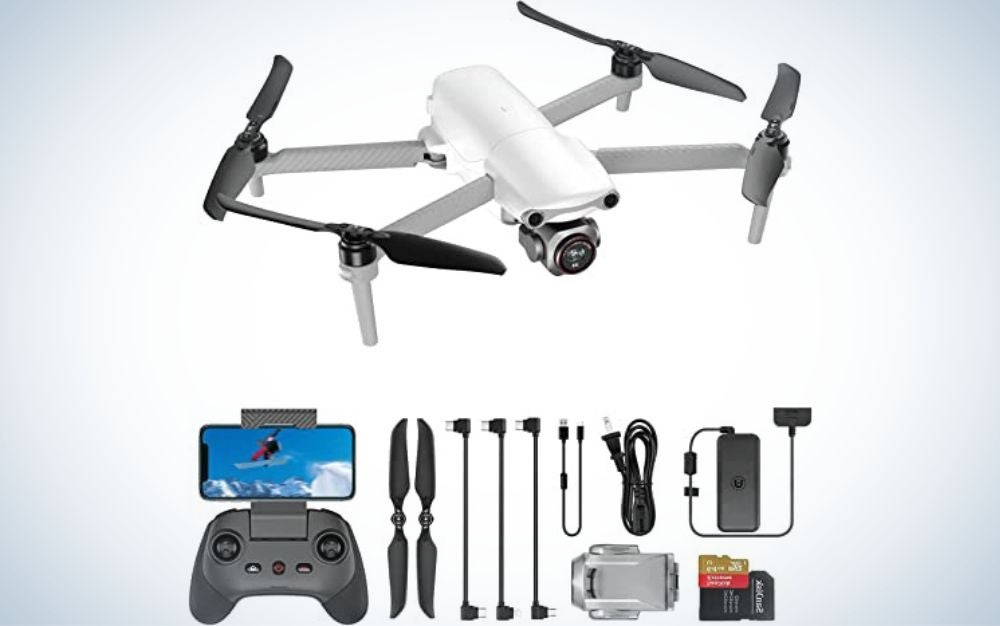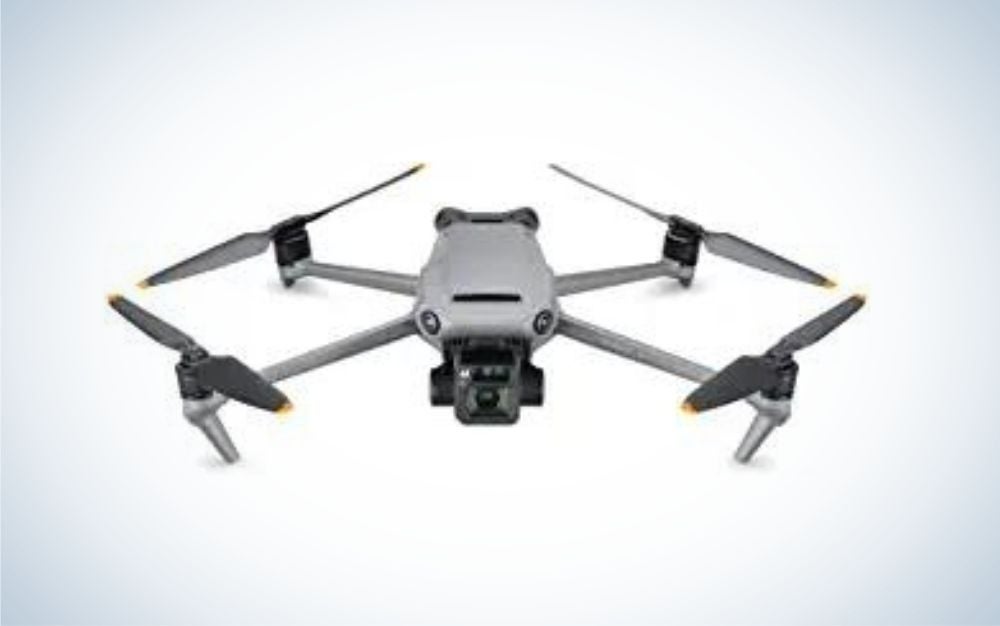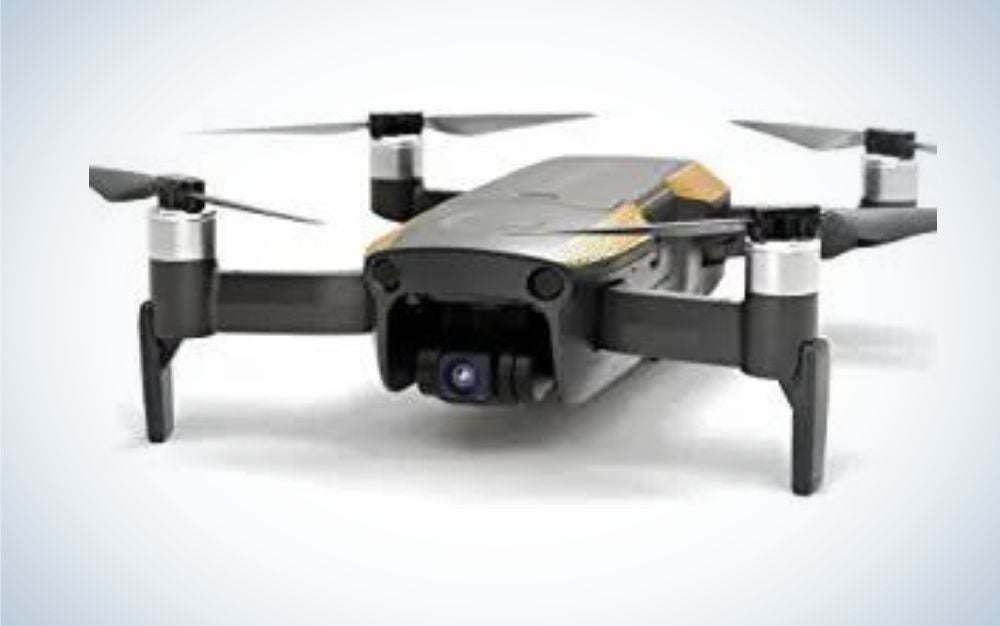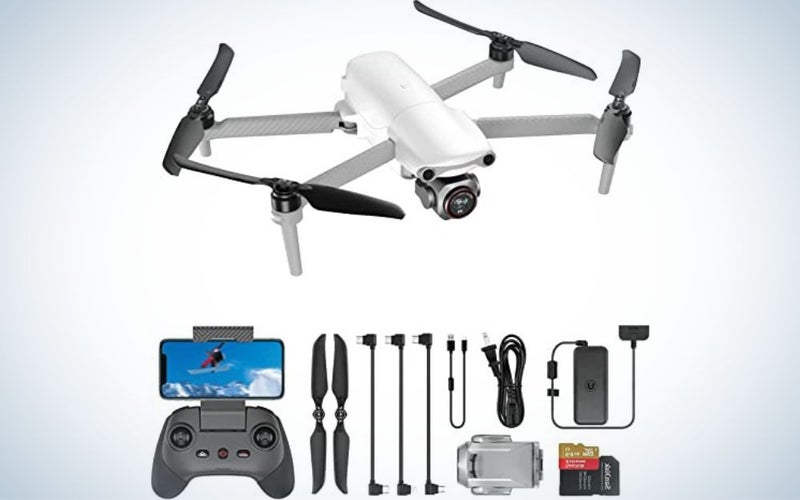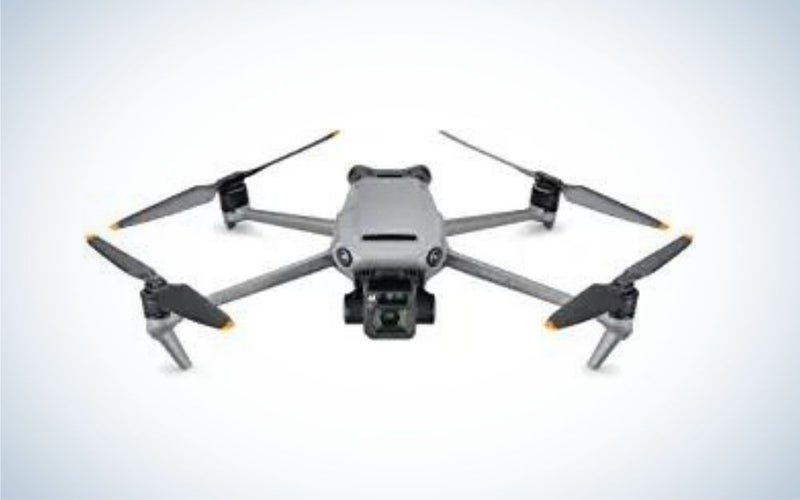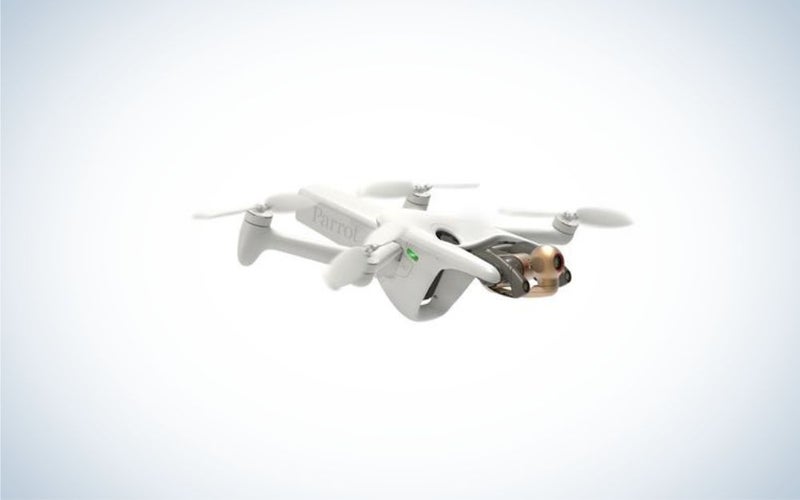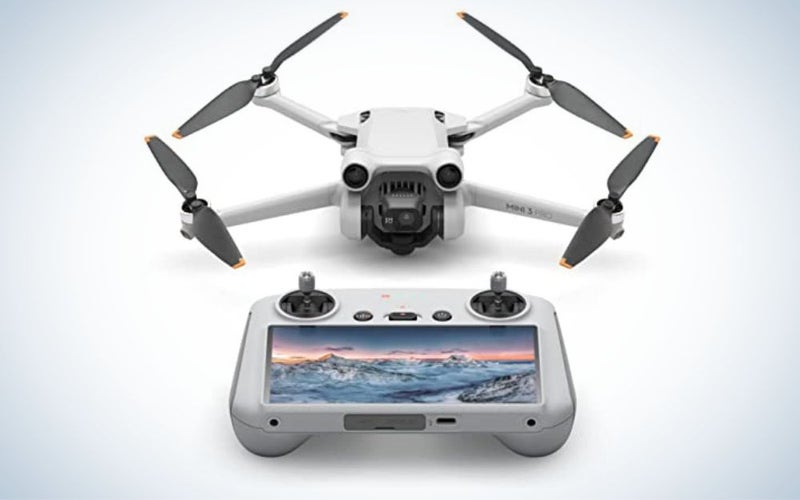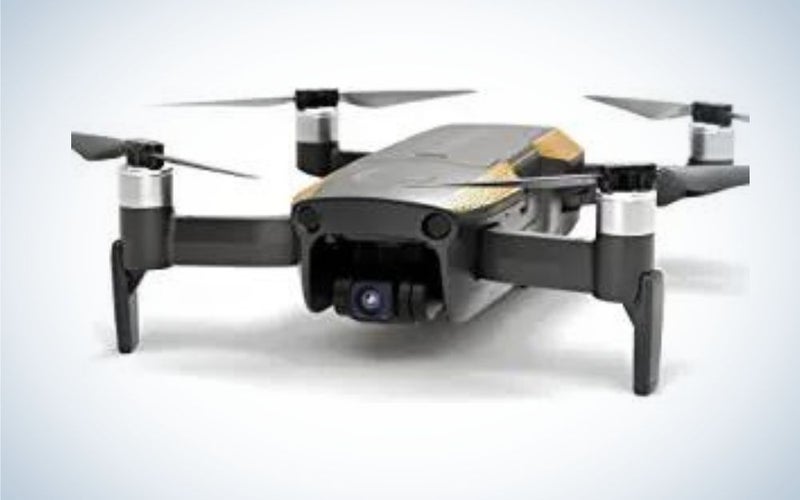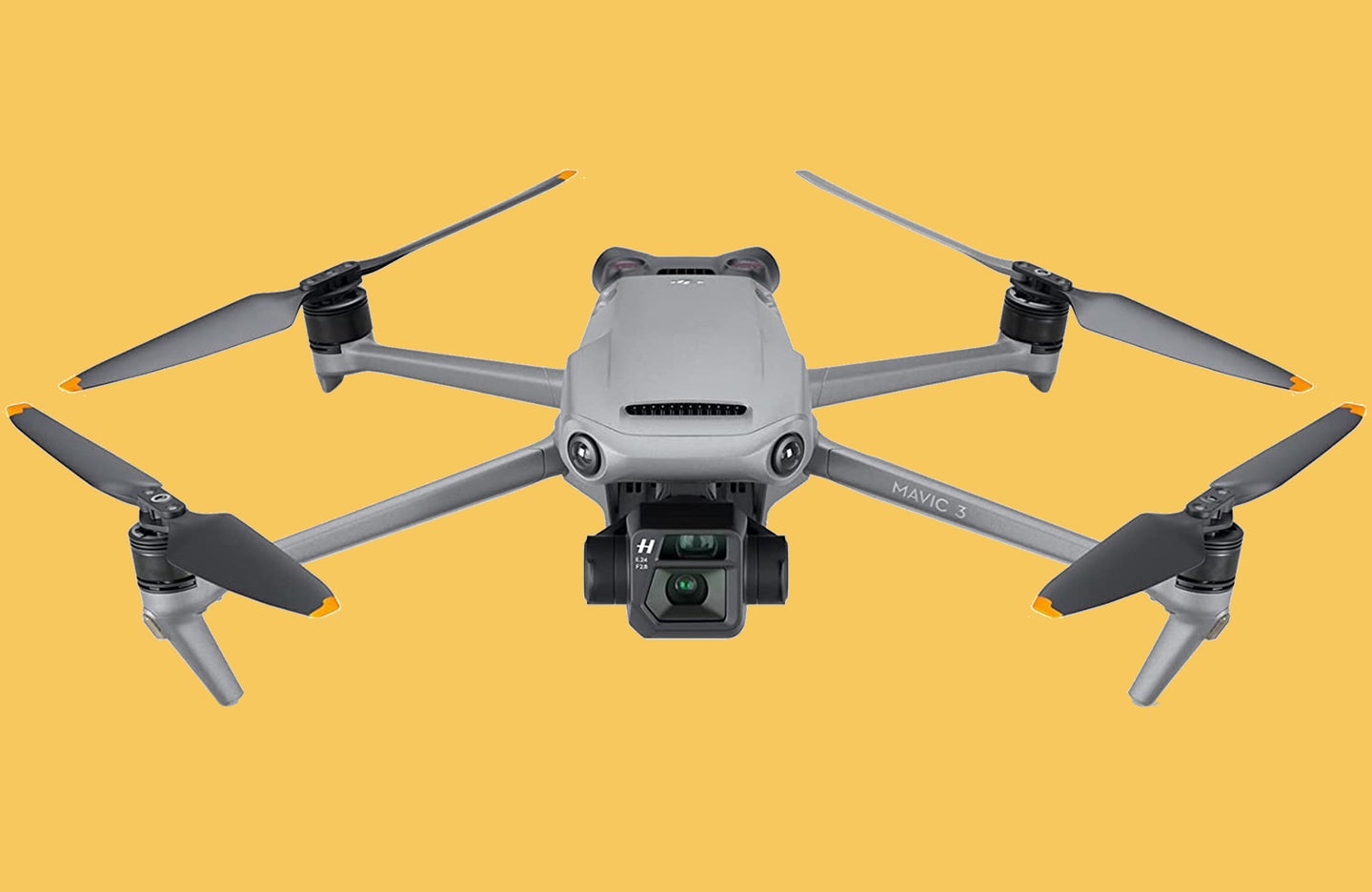
Since hitting the mainstream market, drone technology has come a long way, resulting in some very impressive drones for real estate photography. It seems like a distant memory when capturing aerial imagery amounted to something only marginally better than duct-taping a GoPro Hero 3 to an RC car with propellers. Nowadays, drones come equipped with a wide range of advanced features. And as drones have become more feature-rich over the years, so have their uses from a commercial standpoint.
Drones have made aerial cinematography accessible to the general public by making the hobby affordable and safe. Users can fly mostly worry-free, allowing them to get more and more creative with the applications of their equipment. Now drones are used for everything from inspecting miles of pipeline and tall structures, extended search and rescue missions, and perhaps what they are most known for, cinematography and photography. Whether you are a seasoned pilot or a complete beginner, it is easy to get lost in the options available when looking to purchase a new drone. So if you are looking for the best drones for real estate photography, then you have come to the right guide.
- Best overall: Autel Evo Lite+
- Best for photography: DJI Mavic 3
- Best premium: Parrot ANAFI Ai
- Best for beginngers: DJI Mini 3 Pro
- Best budget: EXO Drones Blackhawk 2
Things to consider when shopping for the drones for real estate photography
Image quality
We judge a real estate drone by its ability to capture quality media for real estate agents, property managers, and homeowners. That media helps connect their property to potential buyers and can have a significant impact. And the quality of a drone primarily comes down to its camera.
Regarding camera specs, there is a fine balance between marketing fluff and what numbers hold up in the real world. As a general rule of thumb, the bigger the image sensor, the better the image quality. We have been conditioned to look at the megapixel count as a marker of how good an image will be. While this is true to some extent, it doesn’t paint the whole picture.
Megapixel count refers to pixel density on the sensor. But to put that value in perspective, it also helps to know the size of the pixels. Pixel size is commonly depicted in micrometers (μm). The larger a pixel is, the better its ability to soak up the light required to generate an image. That is why a larger sensor with a lower megapixel count can outperform a much smaller sensor with a higher pixel density. Using these numbers paired with other features will assist us in choosing the best camera drone for our needs. For real estate photography and videography, you’ll also want to look at the minimum and maximum aperture, ISO limitations, shutter speed capabilities, raw support, and bracketing options.
Video capabilities
Although still photography is currently the leading feature that drives drone sales for real estate, you should not ignore video either. In today’s age, video is one of the most powerful tools anyone can use when making a purchasing decision. Given the right property with the right features and amenities, a pilot’s ability to shoot stunning videos could be what separates it from the competition and pushes a buyer to make a move.
With each new iteration of drones, manufacturers push camera specs related to a drone’s ability to capture slow-motion video. However, we are concerned with a camera’s resolution over its frame rate. A high resolution camera that captures ultra-high-definition video or better is more important than a camera’s ability to slow that footage down. After all, our subjects in this field are primarily stationary, and when slow-motion is preferred, simply flying at a slower speed can deliver a similar effect.
Max flight time
Short flight times are one of the biggest problems that still plague the drone industry. Luckily drone manufacturers have improved this time through battery improvements and increased motor output with lower electrical requirements. Simply put, if a drone allows you to stay in the air longer, you have more opportunities to capture better assets. Sure, you can circumvent this by carrying multiple batteries with you on a shoot, but if a drone’s flight time is up against the clock of a setting sun, the time it takes to do a battery swap can be detrimental to the outcome of an assignment.
Equipment dependability
Anyone who has flown a drone a handful of times has likely experienced the sheer panic that ensues when a radio transmitter loses connection with the drone’s radio receiver. Luckily, a heightened awareness of these issues has forced manufacturers to implement safety features such as a return to home and a complete failsafe (full shutdown of a drone’s flight systems to prevent harm/damage).
It certainly is exciting to think that these little flying machines can travel well beyond a reasonable distance. Still, the fact of the matter is, depending on your location, it could be illegal to fly your drone outside of a direct line of sight. Also, a failsafe that far off could put that costly investment straight into the ground without any hopes of recovery. While manufacturers have their own propriety transmitting technology, you can loosely use a drone’s maximum travel distance to gauge the signal strength, hinting at its overall reliability.
The best drones for real estate photography: Reviews and recommendations
Best overall: Autel Evo Lite+
Autel Robotics
Why it made the cut: Out of all the drones we reviewed, the Autel Evo Lite+ packed the most bang for the buck. It has superb image quality backed with raw image support and exceptional flight time.
Specs:
- Camera: 20 MP
- Video quality: 6K at 24/25/30fps
- Max flight time: 40 minutes
- Onboard storage: 6 GB
Pros:
- ISO Expandable up to 48000 with Night Mode
- Large 1” CMOS Sensor
- 6K video
- Outstanding hyperlapse performance
- Obstacle detection
Cons:
- Bulky design has portability issues
- No LOG profile for video
The Evo Lite+ is the latest offering from Autel Robotics in their drone lineup. It packs a 1″ CMOS sensor capable of 6K video, giving you awe-inspiring footage. With a top-end ISO of 48000, this drone is one of the best cameras on the market in its class. A max flight time of 40 minutes ensures you have plenty of time to capture every angle of your subject.
This Autel Robotics drone has three-way obstacle sensors for safe flying. So if the property you are working at has many trees, you won’t have to worry as much. And it has a maximum flight range of 7.4 miles, so you can fly while trusting that your drone and radio will always have a strong connection.
It’s a bit of a double-edged sword, but Autel drones don’t come with geographically based flight limits like DJI drones. That makes it easier to fly in certain areas. But it also means you risk breaking FAA rules and putting airplane pilots in danger if you aren’t careful. So always check local regulations before you lift off the ground and keep your eyes open for low-flying aircraft in the areas as well.
You get 6 GB of storage on the drone itself, which is enough for most photography needs. But if you want to shoot video, especially 6K, you will want to get a microSD card.
Best for photography: DJI Mavic 3
DJI
Why it made the cut: In the latest from the Mavic lineup, the drone now boasts two cameras on the same gimbal, giving pilots more creative freedom. And the 20 MP camera ensures your still photos are top-notch for clients.
Specs:
- Camera: 20 MP
- Video quality: 5.1K at 24/25/30/48/50fps
- Max flight time: 46 minutes
- Onboard storage: 6 GB
Pros:
- Huge 4/3 CMOS sensor
- Larger frame and weight for better stabilization
- Omni directional
- Very stable in flight
Cons:
- Battery life seems embellished
- Very expensive
DJI has been an industry leader for many years regarding drone technology. In DJI’s latest offering from the Mavic lineup, the Mavic 3 carries the industry’s first ever dual-camera system in a cinedrone. The primary camera is a micro 4/3 from Hasselblad with a focal equivalent of 24mm. The second camera is a ½” telephoto camera with a focal length equivalent of 162mm.
The raw image formats and image bracketing capabilities make the Mavic 3 a photographic powerhouse compared to any other drone of its class. The bracketing is especially useful for real estate applications. It will allow your drone photos to more closely match your interior shots if you are someone who uses HDR. While the video isn’t quite up there in the 6K range, the Mavic 3 shoots a maximum of 5.1k at 50fps for pilots who require more from their drone’s video abilities.
The consensus related to DJI’s listed flight time is that 46 minutes feels a bit embellished. However, the actual flight time is still around the 40 minutes mark, which is a respectable flight time for a drone of its size and weight. And that 40 minutes of flight time is much better than the measly 15-20 minutes of flight time offered a mere ten years ago. Plus, if you are strictly taking still photos, 40 minutes should be plenty of time to get the winning shots.
Best premium: Parrot ANAFI Ai
Parrot
Why it made the cut: The Parrot ANAFI Ai tiptoes a fine line between professional and enterprise level use. It’s undoubtedly the most expensive drone on this list and fits a particular real estate drone work category that no other drone offers on the professional level market.
Specs:
- Camera: 48 MP
- Video quality: 4K at 48/50/60fps
- Max flight time: 32 minutes
- Onboard storage: None
Pros:
- Open source drone for lots of customizablity
- 4G connectivity provides stable connection with remote
- Ability to program flight plans
- Six axis stabilitzation for sharp images
Cons:
- Very expensive
- Tech specs of hardware leave a lot to be desired
The Parrot ANAFI Ai offers features that no other drone on the market does. If your real estate aerial photography business requires 3D telemetry mapping of properties or structures on the property, then this is the drone for you. It’s also an open-source drone so that you can tailor it to your needs.
The ANAFI Ai is also unique in its 4G connectivity, allowing you to operate the drone from any distance. You still need to pay attention to FAA regulations, though, so you won’t fully be able to take advantage of that in most situations. Perhaps the biggest plus of the 4G connection is that the drone will remain connected to the remote even when it is behind obstacles. If you are flying on a heavily forested property, location with prominent terrain features, or somewhere with other buildings, that connectivity is a huge asset.
Regarding camera specs, you get a 48 MB camera. It has a Quad Bayer sensor that provides 14 EV of dynamic range when in HDR 10 mode. Unfortunately, the video quality is only 4K at 60p, which is lower than significantly cheaper drones. Still, its unique use case and specific target market set it in a class of its own.
Best for beginners: DJI Mini 3 Pro
DJI
Why it made the cut: At a lower price point than its bigger brother, the Mavic 3, along with easy flight modes, the Mini 3 Pro is a perfect drone for beginners to get started with.
Specs:
- Camera: 48 MP
- Video quality: 4K at 24/25/30/48/50/60fps
- Max flight time: 35 minutes
- Onboard storage: None
Pros:
- Easy to use
- Feature rich for the price
- Vertical video
- Flight modes ideal for beginners
Cons:
- Additional batteries and equipment can be pricy
DJI has been paving the way in the drone industry, and a Mini 3 Pro is one of the easiest drones to get started with drone flying. Since its inception, DJI has perfected its flight stabilization technology, making flights smooth and easy to control. Its drones also have a return-to-home failsafe, so you can worry less about losing control.
The Mini 3 Pro has a 48 MP camera capable of producing raw images, giving you more control over exposure adjustments. And you can bracket with this drone, so your exterior aerials will match your camera photos if you like HDR images. Plus, the pre-programmed intelligent flight modes help you get excellent shots even if you are new to flying.
For those wanting to create videos, the Mini 3 Pro has 4K 60fps video capabilities. Video footage is smooth and stable, even if you are contending with some wind. And the drone’s camera can rotate 90 degrees, allowing for uncropped vertical video and photos. It truly opens the doors for creators, even if they are new to flying drones.
Best budget: EXO Blackhawk 2 Pro
EXO
Why it made the cut: Simply put, for the price, this drone packs a punch for anyone looking to get into drones. With its 48 MP camera, the EXO Blackhawk 2 Pro more than earns its place as our best affordable drone for real estate.
Specs:
- Camera: 48 MP
- Video quality: 4K at 30fps
- Max flight time: 35 min
- Onboard storage: 64 GB
Pros:
- Extremely portable formfactor
- Forward, rear, and downward obstacle avoidance
- Includes a carrying case
- 6.2 mile range
Cons:
- Added flight modes are unreliable
- GPS positioning could be better
EXO Drones is a company that prides itself on creating professional quality drones at an accessible price point. The Blackhawk 2 Pro is a fantastic choice for new pilots looking to get into real estate photography without breaking the bank. The three-axis gimbal helps keep the drone stable in flight, ideal for beginners and advanced users alike. And it can pin its GPS location, making it much easier to find should it crash out of sight.
It features a 1/1.3″ sensor for quality footage and is capable of HDR content. With a 48 MP camera, it can capture fine detail for showing off key features of a property. In addition, its 4K camera is well suited to the task of capturing fly-by videos, creating an interactive story for your listing.
The 35 minute flight time, while still respectable, could be a bit better. But ultimately, it is worth the time it takes to swap batteries at this lower price point. The drone also comes with a carrying case, some spare propellers, and two batteries in the case of this bundle, helping you stay in the air longer.
FAQs regarding the best drones for real estate photography
Q: Do I need a drone license for real estate?
If you plan on using your drone to generate revenue of any kind, the FAA regulations in the United States of America classify your flight as commercial activity. That leaves you subject to all laws pertaining to commercial drone flight. In order to be compliant with FAA regulations, it is crucial that you get your Part 107 as soon as possible to avoid getting pinned with hefty fines.
Q: Are there laws around real estate drone photography?
During your Part 107 training, you will cover the rules and regulations regarding flying your drone around people and buildings. For residential real estate work, as long as you have the proper permissions from the property owner and don’t use your drone to film people in areas with a reasonable expectation of privacy, there are no further regulations to operate within.
However, additional permitting may be required through the local municipality in high-population areas such as cities. Additionally, there are areas where drone activity is prohibited, such as government buildings, jails, and airports. Therefore, it is essential that before every flight, you check your local rules and regulations around the area you will be operating your drone.
Q: How much does drone photography cost for real estate?
Your area’s demand for drone pilots will largely determine the competitive rates. Typical rates, including photo editing time, range from $150 to $250 per photography session. The most commonly used rate for drone operators is around $150 an hour. Determine your cost of doing business and adjust your prices based on skill level, consumer demand, and overhead.
Q: How much do drones for real estate cost?
Drones come at many different price points, depending on their features. While it may be amusing to rush out and pick up the latest DJI offering with all of the bells and whistles, if you are starting out, consider a drone at a more entry-level price point. A more affordable option will allow you to experience the excitement of getting your first drone off the ground without the anxiety of what will happen in the event of a catastrophic failure. There is a point, however, where the quality of cheaper drones starts to edge them out of consideration for professional use. The EXO Drones Blackhawk2 is our top choice for the best budget drone for real estate dronography.
Final thoughts on the best drones for real estate photography
The right drone is an asset for real estate agents looking for new ways to add value to listings and drone enthusiasts striving to earn income. Narrowing in on your budget, desired features, and quality needs will help ensure you end up with the best option for your use.
How we selected the best drones for real estate photography
Most of the assignments drone pilots are hired for when it comes to real estate will fall into one of two categories: capturing compelling assets to be used in the sale of the land or home or showcasing a property’s amenities to aid in booking a vacation rental. For this reason, we primarily graded each of the drones on this list on their ability to capture still images. Camera quality, sensor size, and gimbal quality were all important considerations. We also looked at flight modes that may aid in capturing a property’s details, especially for those who may be new to the genre.
The post Best drones for real estate photography in 2022 appeared first on Popular Photography.
